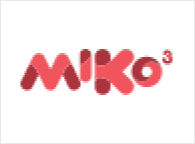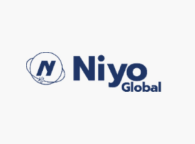Mobile App digitalization and revolutionasing traditional reading habits
In this digital age, people look for staying updated as…
Mobile App Development Company in Houston is the ideal place for you to develop and launch your next-generation Mobile app using cutting-edge Technology.

Today, there is an application for seemingly everything. If a company doesn’t have its own application, it appears as unusual as not having a website a decade ago. This could potentially lead to revenue loss since the demand for dependable, user-friendly applications has never been greater. Fortunately, contemporary mobile development tools simplify the creation of high-performance applications for both iOS and Android. However, when it comes to application development, the initial decision revolves around selecting the appropriate technology stack.
In the context of the iOS ecosystem, the choice narrows down to Flutter/Dart or native ios application development using Swift. That’s why this blog offers a comprehensive comparison of these technologies to assist you in making the optimal choice for your project
In 2014, Apple released Swift, a multi-paradigm, open-source, compiled programming language designed specifically for iOS development.
Swift has many advantages:
Flutter is a cross-platform development technology created by Google that makes use of the Dart ios programming language to construct apps for iOS, Android, Linux, Windows, Mac, Google Fuchsia, and web applications. The cross-platform technology Flutter has many advantages:
Flutter has many advantages:

Now that we’ve explored the fundamental aspects of Swift and Flutter let’s compare them based on key criteria that matter to iOS app developers:
Swift excels in performance due to its native integration with iOS. It leverages all of Apple’s hardware and software optimizations, resulting in highly responsive and smooth iOS applications. On the other hand, Flutter, being a cross-platform framework, may not offer the same level of performance as Swift, especially for complex and graphics-intensive apps.

Swift benefits from Apple’s extensive suite of development tools, including Xcode, Interface Builder, and the iOS Simulator. These tools provide a seamless and efficient development experience for iOS app developers. Flutter, while equipped with its set of tools, may not match the comprehensive support offered by Apple’s ecosystem.
Flutter shines in terms of design tools, offering a wide range of customizable widgets and a flexible UI framework. This makes creating visually appealing and unique user interfaces easier for an iOS app developer. Swift, while not lacking in design capabilities, might require more effort to achieve the same level of customization and flexibility.
Flutter takes the lead in cross-platform compatibility. If your goal is to create ios app that also runs on Android with minimal code changes, Flutter is the clear choice. Swift, being platform-specific, requires a separate codebase for Android, potentially doubling development efforts.
Swift’s learning curve can be steep, especially for beginners. It demands a good grasp of programming concepts and iOS-specific development practices. Flutter, with its simplified Dart language and hot reload feature, is more accessible to those new to app development.
Swift benefits from a robust ecosystem and a large community of iOS app developers. This means ample resources, libraries, and third-party support are readily available. Flutter’s community is growing rapidly, but it might take some time to reach the level of Swift’s mature ecosystem.
When it comes to leveraging iOS-specific features like Face ID, ARKit, and Siri integration, Swift offers a seamless experience. Flutter, while improving in this area, may not provide the same level of integration and access to these features.
The decision between Flutter and Swift ultimately depends on your specific project requirements, goals, and your proficiency as an iOS app developer. Here are some scenarios to consider:
In the realm of iOS app development services, the choice between Flutter and Swift boils down to your project’s specific needs. Swift offers unparalleled native integration and performance for iOS, while Flutter shines with its cross-platform compatibility and design capabilities. As an iOS app developer, it’s essential to assess your project’s objectives and constraints carefully.
Consider your target audience, the complexity of your app, and your team’s expertise when making your decision. Whether you opt for Swift or Flutter, the key to success lies in mastering your chosen tool and delivering a stellar iOS application that captivates your users and thrives in the competitive iOS app market.



Both Flutter and Swift have their merits, and the better selection for iOS app development depends on your project’s unique requirements and your proficiency as an iOS app developer. To explore how Wama Technology can assist you in realizing your iOS app development goals, contact the experts today and embark on a rewarding journey of innovation and success.

I had a meeting with a number of developers, but when I met Deep, he asked heaps of critical questions and demonstrated an insightful understanding of my unique needs, which is new. He told me straight what needed to be done and what could be done in the given time and budget constraints. In fact, they have over-delivered, which is so unusual. I highly recommended Wama Technology to industry colleagues, who have struggled to find a reliable tech partner.Fi H. United Kingdom (UK)

We use Wama Technology they respond quickly and do excellent job. Wama Technology has a great Team and exponential Vision to develop high performance, global digital platforms. Thanks to their professionalism, we were able to create a business from only an initial idea.Fernando P. Mexico

When you step back and look at everything Wama Technology provides, it has everything you’d want if you were building out your own personal safety monitoring app. Instead of it being one part of our stack we have to fight with and maintain, Wama Techonology takes care of everything for us.Dr. Ralph K. United States (US)

I have been working with them for a year on App Development. They are very helpful and great company to work with. They make gorgeous products, provide dependable service, and fast to answer questions. Wama Technology simplified a complex process and delivered a product worth the investment. Highly recommend for app and website development.Jason W. United States (US)

We use the latest and the most cutting-edge tools for the job. We go head to head with the competition, you can bet your bottom dollar on us. We put the “awe” in Techn-awe-logy!

We believe in hard work and earning one’s keep, and that every penny is precious. At Wama Technology the rates are competitive and you don’t have to break your bank to afford our services.

We do not just do the bare minimum and then disappear from sight. We do not rest until we have surpassed and exceeded expectations. You can depend on us for assistance and support.
In this digital age, people look for staying updated as…
In today’s fast-paced world, convenience is key. With the rise…
In the serene landscapes of rural areas, where fields stretch…































